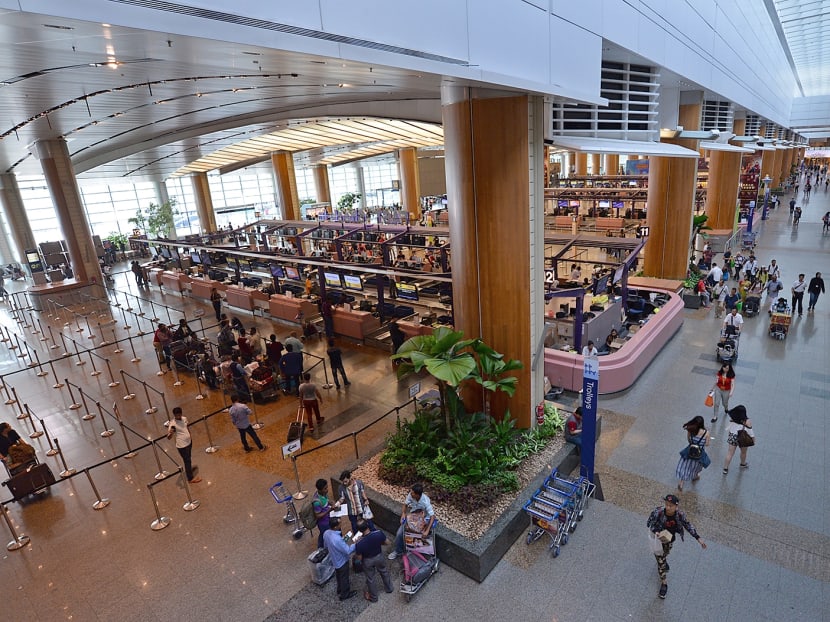Changi Airport T2’s open design allowed smoke to spread quickly: Experts
SINGAPORE — Explaining how smoke from a fire could spread through the entire Terminal 2 building of Changi Airport and forced a mass evacuation, building and aviation experts told TODAY that the open design of the terminal is a contributing factor.

Members of the public at the Departure Hall of Changi Airport Terminal 2, on May 17, 2017. Photo: Robin Choo
SINGAPORE — Explaining how smoke from a fire could spread through the entire Terminal 2 building of Changi Airport and forced a mass evacuation, building and aviation experts told TODAY that the open design of the terminal is a contributing factor.
They added that the room holding air-conditioning equipment — where the fire started — should have been better monitored. This is because any fire there could cause smoke to be channelled quickly through the vents to other parts of the airport.
Aviation expert Dr Terence Fan, from the Singapore Management University, said that the Changi Airport Group could learn from the incident on Tuesday (May 16) and watch over such equipment rooms more closely, “so that any fire or suspicious activities can be spotted right away”.
As for the open interior design, this is seen in many modern airports.
Assistant Professor Sam Conrad Joyce, who teaches architecture and sustainable design at the Singapore University of Technology and Design, said that these airports usually have a sequence of large spaces to allow human traffic to move and navigate freely. Yet, these large spaces can hinder “fire-zoning” — a method typically used to control smoke by creating spaces that can be isolated from each other, and to reduce impact.
“However, the benefits of an open design outweigh the fire problems, given the infrequency of such events,” Dr Joyce said. “This issue is not special to Changi Airport, and it seems that they were able to resolve the problem expediently.”
Dr Joyce explained that it would be easier to clear out smoke from malls because they tend to be more vertical in layout, allowing smoke to travel up and away from users, as compared to the horizontal space in airports.
On the airport management closing the terminal and evacuating people, the experts agreed that it was a wise decision. With the huge amount of smoke circulating, the management had to look to the worst-case scenario.
With heightened terror alerts around the world, Dr Fan said the airport had to ensure that the fire “was not a decoy or part of a larger plot”.
Temasek Polytechnic’s Gary Ho, a senior lecturer with its aviation management and services diploma course, said that closing the terminal was not “about being kiasu”. If the airport management did not act quickly and the fire turned out to be worse, the consequences would be far greater, he added.
“Many lives are involved here, and they didn’t want to take that risk.”
While the airport did a “great job” providing updates on the situation on social media, Mr Ho said that communication between the airport and the stranded passengers could be further improved, to give timely updates on their flights.






